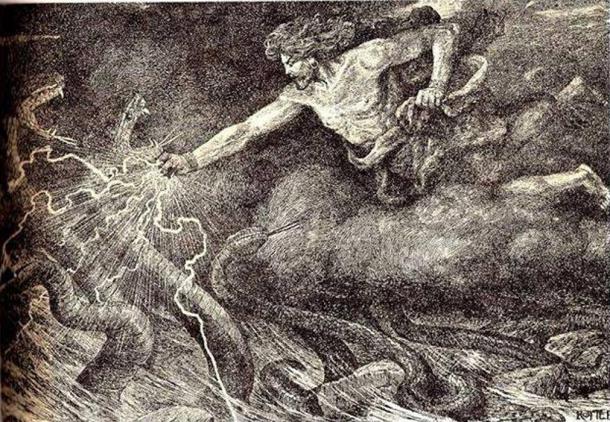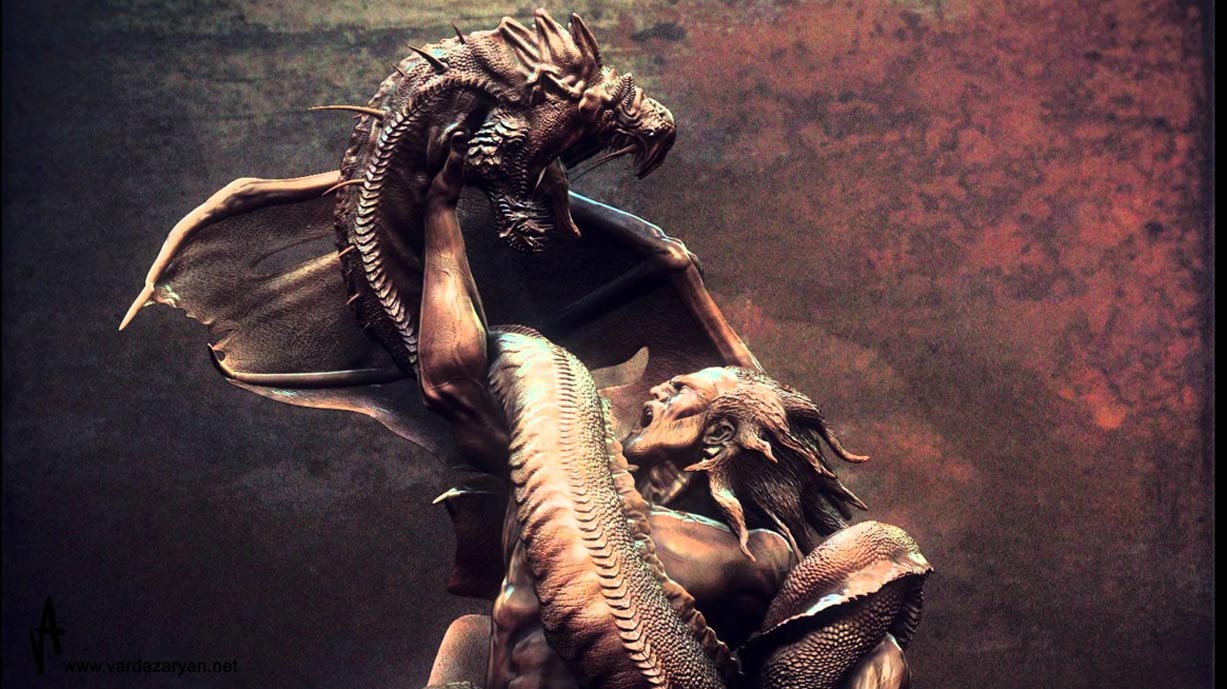Vahagn: The Armenian Dragon Slayer God and Bringer of Fire
Vahagn is a deity that was worshipped in Armenia during the period prior to the coming of Christianity. Vahagn was revered as a fire god. The name Vahagn is derived from a combination of two Sanskrit words – vah and agni. The former is said to mean ‘to bring’, whilst the latter, ‘fire’. According to this interpretation, therefore, the name of this ancient deity may be translated as ‘the bringer of fire’. Vahagn was also worshipped as a god of volcanoes, a solar deity, and a warrior god.
Alternative Origins of Vahagn Name
An alternative explanation for the origin of Vahagn’s name is that it was derived from the Persian Veretrana / Veretranga / Verethranga. In this case, it was not only the name of the deity, but the god himself that was brought into Armenia from a foreign land.
The deity known as Artagnes is a Hellenized version of Vahagn, as the former has been identified as Veretrana / Veretranga / Verethranga. The deity Artagnes, by the way, is best known as one of the composite gods (Artagnes-Herakles-Ares) depicted on Mount Nemrud, the tomb-sanctuary built by Antiochus I Theos, the most famous ruler of the Kingdom of Commagene.
- The Legacy of Armenia: Trade, Metallurgy, and Forging of Precious Metals of the Ancient World
- The Rise and Fall of Tigranes the Great, King of Armenia
- The Great Erebuni of the Uratian Kingdom: Fortress of Blood

Statue of Vahagn the Dragon Slayer choking a dragon in Yerevan. (CC BY-SA 3.0)
Vahagn was commonly worshipped as part of a triad, alongside the deities Aramazd and Anahit. Whilst these two deities are Armenian, it is quite possible that they were adopted from Persia. Aramazd is derived from the Zoroastrian Ahura Mazda, whilst Anahit from the Old Persian Anahita. This may be regarded as further evidence supporting the claim that Vahagn is the Armenian version of the Persian Veretrana / Veretranga / Verethranga. Still, there are also those who argue that Vahagn was not a Persian import, but a native Armenian deity whose origins can perhaps be found in the country’s remote past.
The Birth of a Dragon Reaper
Although worshipped as part of a triad, Vahagn was a significant god in his own right. For example, this deity is commonly known by his epithet ‘Vishapakagh’, which means ‘the Dragon Reaper’. This title is self-explanatory, i.e. that Vahagn fought and conquered dragons, thus making him a sort of warrior god. This story is found in an ancient song written by a 5th century AD Armenian historian by the name of Moses Khorenatsi / Moses of Khoren. Unfortunately, the part about battling dragons is said to be now lost. In spite of this, the story of Vahagn’s birth has been preserved, and may shed some light on this deity.
In this song, Vahagn is depicted to have been born out of a hollow reed stalk in the sea,
“In travail were heaven and earth,
In travail, too, the purple sea!
The travail held in the sea the small red reed.
Through the hollow of the stalk came forth smoke,
Through the hollow of the stalk came forth flame,
And out of the flame a youth ran!”
In the text, the idea that Vahagn was a fire deity is further emphasized. Additionally, it may be interesting to note that the smoke and flame emerging from the “hollow of the stalk” is somewhat similar to a tale in Hindu mythology, in which the god of fire, Agni, hides in the hollow of a plant stalk in order to hide from the other gods who wanted to task him with the carrying of the offerings made by human beings to them.

Vahagn, the Armenian fire god. (CC BY 3.0)
A Trickster Who Made the Milky Way
Vahagn was not merely a fire god and a warrior god, but, to a certain extent, a trickster god as well. Another of Vahagn’s titles was ‘Hartagogh’, which means ‘Hay Thief’. The story explaining Vahagn’s acquisition of this title can be found in a legend recorded by a 7th century AD Armenian astronomer by the name of Anania Shirakatsi. According to this tale, Vahagn had once stole hay from a rival god Barsham / Baalshamin, during a winter’s night. In his hurry to get away, however, some of the hay was scattered about in the night sky, thus creating the Milky Way.
- Have archaeologists found the tomb of the ‘god king’?
- Mount Nemrut and the God King of Commagene
- The Discovery of the Long-Lost Temple of Musasir

Vahagn the Dragon slayer engraving by Austrian artist J. Rotter. (Public Domain)
Vahagn is a hugely popular god in Armenia. Due to his popularity amongst the Armenians, the worship of another well-known Zoroastrian deity, Mithra, was not able to gain a firm foothold in the country. Following the arrival of Christianity, Vahagn was reduced from a deity to a king, i.e. the son of Tigranes I, and the father of Aravan.
Featured image: Vahagn the Dragon slayer. Photo source: (YouTube Screenshot)
By Wu Mingren
References
Admin, 2015. Could this mysterious deity be the Armenian God Vahagn?. [Online]
Available at: http://www.peopleofar.com/2015/08/19/could-this-mysterious-deity-be-the-armenian-god-vahagn/
Coulter, C. R. & Turner, P., 2000. Encyclopedia of Ancient Deities. Chicago, Ill.: Fitzroy Dearborn Publishers.
Hacikyan, A. J., Basmajian, G., Franchuk, E. S. .. & Ouzounian, N., 2000. The Heritage of Armenian Literature, Volume 1: From the Oral Tradition to the Golden Age. Detroit, Mich.: Wayne State University Press.
Hewsen, R. H., 1977. The Birth of Vahagn: An Armenian Vision of Celestial Catastrophe?. [Online]
Available at: http://saturniancosmology.org/files/.cdrom/journals/kronos/vol0301/039birth.htm
Kurkjian, V. M., 1958. A History of Armenia, Chapter XXXIV: Armenian Mythology. [Online]
Available at: http://penelope.uchicago.edu/Thayer/E/Gazetteer/Places/Asia/Armenia/_Texts/KURARM/34*.html



















